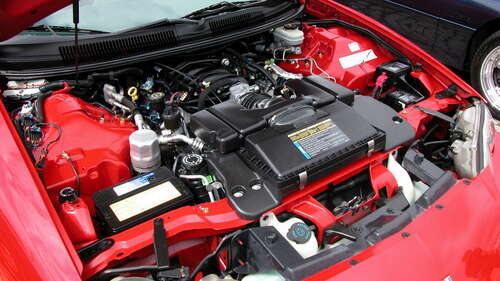
The previous generations of these small block engines were made with a cast iron block, but with the new General Motors LS1 engines, a change was made to instead make them out of aluminum, which was also used for the cylinder heads. By doing this, GM was able to drastically reduce the weight of the engines, and while that did reduce the power capabilities, it makes for a more balanced driving experience. GM gave the engine a bore of 3.9 in. with a 3.62 in. stroke, creating 5.7L of engine displacement. The cast iron you would be able to find was used for the crankshaft for durability.
Despite mostly using aluminum instead of iron, the GM LS1 still was able to handle a good amount of power. When first placed into a Chevrolet Corvette C5 in 1997, it was able to generate up to 345 hp and 350 lb-ft of torque. A few years later, those numbers increased slightly to 350 and 365, respectively, when GM made some improvements to the intake and exhaust manifolds. Not only could you find the LS1 in pony cars like the Pontiac Firebird, Chevrolet Camaro, and aforementioned Corvette, it could also power up larger sedans like the Holden Statesman.
The LS1, along with its high-output LS6 counterpart, enjoyed eight years of production before being replaced by the fourth generation of the small block engine. Although their differences may be small, they are significant.
[Featured image by unknown via Wikimedia Commons | Cropped and scaled | CC BY-SA 3.0]

